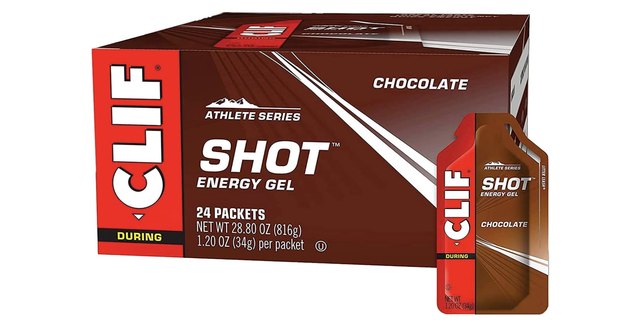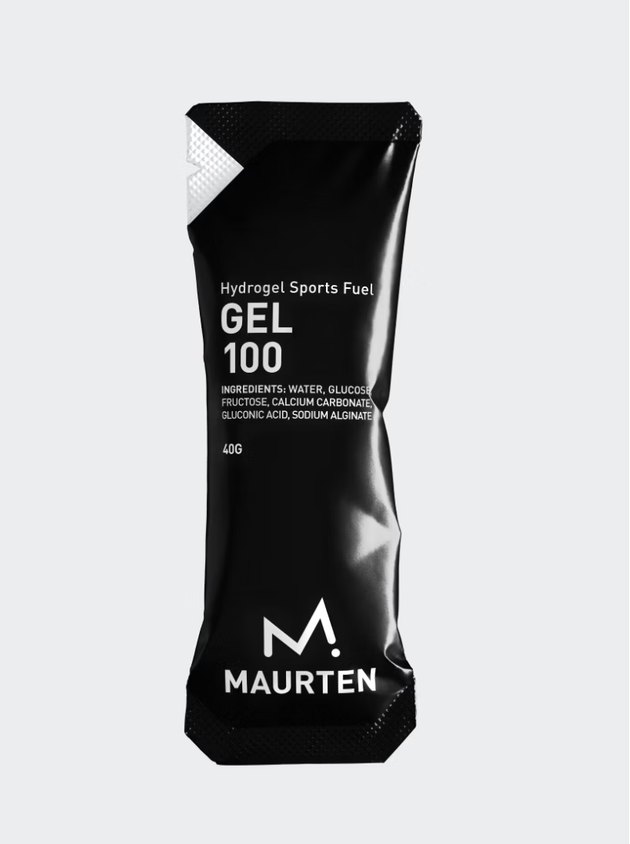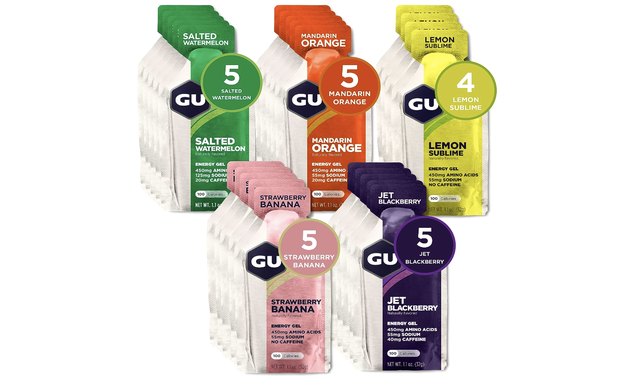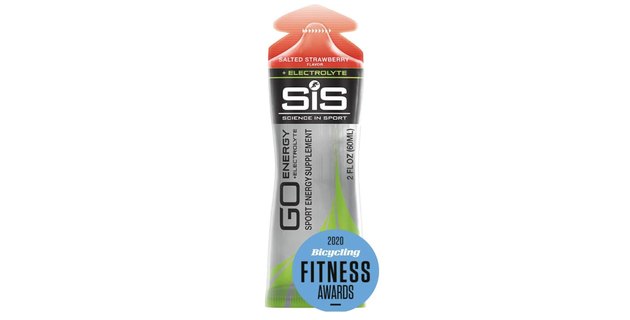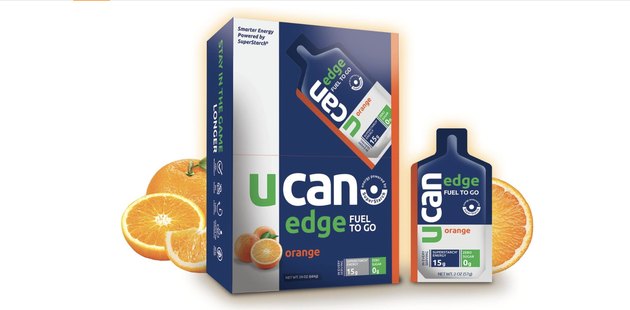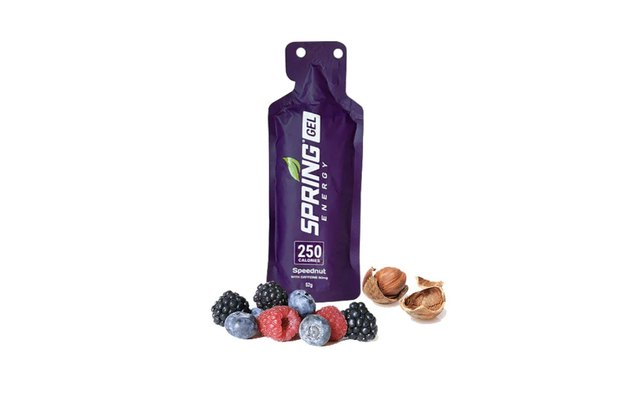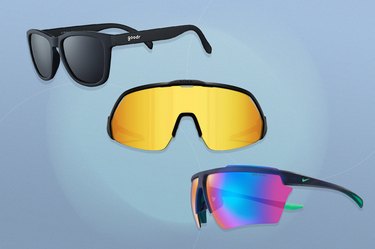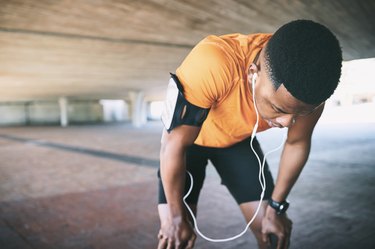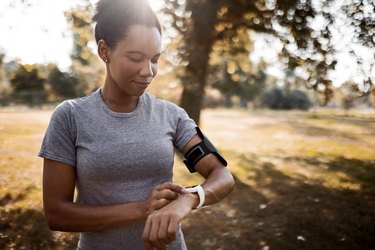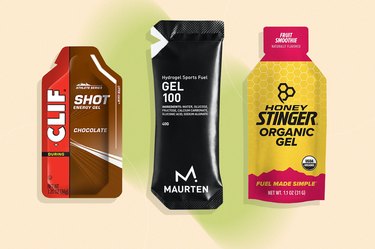
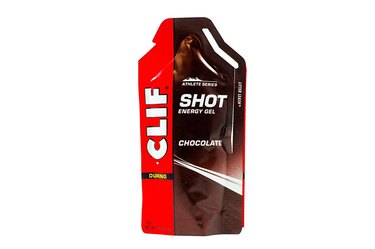
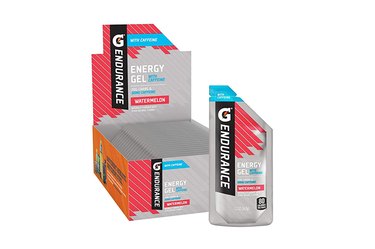
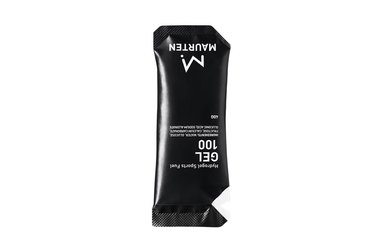
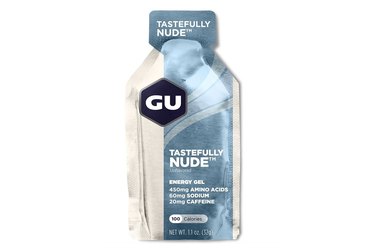
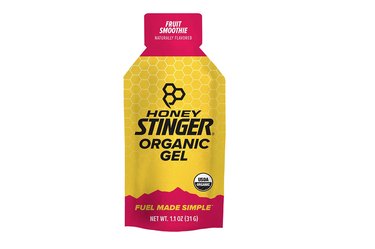
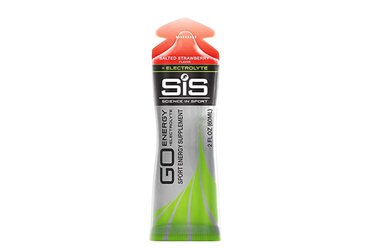
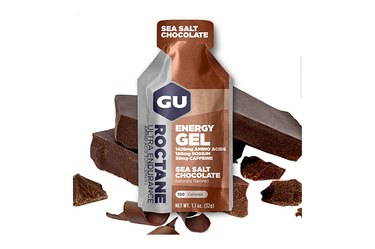
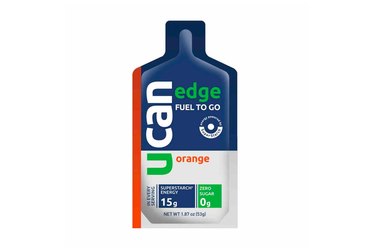

As a runner, the more time you spend on your feet, the more fuel you need. But stopping mid-run to eat a sandwich isn't necessarily practical (or GI tract–friendly). So thank goodness for running gels!
Running or energy gels are a convenient way for endurance athletes to fuel up on the go (just pack some into your running belt or hydration pack) and are specially formulated to be easy to digest.
Video of the Day
Video of the Day
"They're an effective way to allow runners to maintain energy levels," says Lisa Levin, an RRCA-certified run coach and co-founder of Run Farther & Faster. "As a result, runners can perform at an optimal level for a longer duration."
But there are different types of running gels that provide different levels of calories, carbs and even caffeine. So how do you know which one is right for you? We rounded up the best running gels, plus tips on what to look for, according to registered dietitians and run coaches.
How Much Running Gel Do You Need?
Generally speaking, gels are only necessary for runs that are longer than 70 minutes.
Many coaches recommend that you take energy gels based on time on feet rather than mileage. For example, Levin advises her clients to enjoy a serving every 30 to 35 minutes. If that feels like too much, start with a half serving every 35 to 40 minutes and then gradually increase the portions during each training run.
How We Chose
We spoke with four registered dietitians and run coaches, who offered product recommendations and broke down what to look for in the best energy gels for running. We selected the winners on the following criteria. You can learn more about how we cover products here.
- Calories
- Carbohydrates
- Caffeine
- Flavor
- Consistency
- Cost
1. CLIF Shot Chocolate Energy Gel
- Calories: 110
- Carbohydrates: 23 grams
- Sodium: 60 milligrams
This chocolate-flavored running gel supplies 7 milligrams of caffeine and 23 grams of energy-boosting carbs, so it's ideal for someone who's feeling heavy feet and needs a little pick-me-up. It packs 110 calories, which is slightly more than the other products on the list.
Plus, it tastes like fudge, so it's something sweet to help take the edge off during the intense efforts during your run.
2. Maurten Gel 100
- Calories: 100
- Carbohydrates: 25 grams
- Sodium: 34 milligrams
Maurten uses what they call "hydrogel technology" to smoothly transport carbohydrates through your stomach and intestines, making them easily digestible and readily available for energy. If you're trying to avoid processed ingredients, this running gel is free of colors and preservatives and is vegan-friendly.
Flavor-wise, this gel has cotton candy vibes, although you won't see that listed that anywhere on the site.
3. GU Original Energy Gel
- Calories: 100
- Carbohydrates: 21 to 23 grams
- Sodium: 50 to 125 milligrams
Known as the original running gel, GU offers both caffeinated and non-caffeinated options in an array of taste-tempting flavors, including salted watermelon, mandarin orange and strawberry banana.
GU's unique blend also has branched-chain amino acids to help reduce muscle fatigue and damage during exercise.
4. Honey Stinger Organic Fruit Smoothie Energy Gel
- Calories: 100
- Carbohydrates: 24 grams
- Sodium: 50 milligrams
Honey Stinger's running gels are made with (you guessed it) honey, which is more easily digested and absorbed into your system. Honey is also lower on the glycemic index than other gels that include simple sugars, so it reduces fluctuating spikes and dips in blood sugar.
Plus, this gel is certified USDA organic.
5. Science in Sport Salted Strawberry Energy Electrolyte Gel
- Calories: 87
- Carbohydrates: 22 grams
- Sodium: 130 milligrams
Because of its thinner consistency, this gel feels more like a beverage than a sticky syrup, so there's no need to have it with water.
There's also less than 1 gram of sugar in a packet, so it's ideal for people who are trying to keep their sugar intake low. But it does have acesulfame-K, which is an artificial sweetener that may cause gastrointestinal issues in some people.
6. GU Energy Roctane Ultra Endurance Sea Salt Chocolate Energy Gel
- Calories: 100
- Carbohydrates: 19 grams
- Sodium: 180 milligrams
Made for ultra-endurance athletes, this GU gel has two to three times the amount of amino acids and sodium than most other brands. Amino acids can aid in muscle recovery and improve cardiac output during exercise. Plus, it has 35 milligrams of caffeine to give you a jolt of energy.
It's best to take one packet 5 minutes before the start of your race or training session, and every 45 minutes during exercise to stay properly fueled, according to GU.
7. UCan Orange Edge Energy Gel
- Calories: 70
- Carbohydrates: 19 grams
- Sodium: 55 milligrams
UCan's gels come in larger pouches than other energy gels and are made of their signature SuperStarch, which is a complex carbohydrate made from non-GMO corn. It provides long-lasting fuel to help power your runs and doesn't contain added sugars.
Plus, the tangy, citrus flavor provides a refreshing treat when you feel like you've hit a wall.
8. Spring Energy Speednut With Caffeine
- Calories: 250
- Carbohydrates: 12 grams
- Sodium: 6 milligrams
For runners in larger bodies, gels that max out around 110 calories just don't cut it (larger bodies burn more calories). The Speednut from Spring Energy adds in nutrient-dense hazelnuts and cashews to boost the calorie count.
"Being a larger individual, I'd have to carry about 40 of [the typical gels] to run a marathon," Martinus Evans, founder of the Slow AF Run Club, says. "I really like this one because it has more calories than most gels."
The low sodium in this one means you'll likely need to replenish your electrolytes separately.
6 Things to Look for in a Running Gel
There are many types of running gels designed for enhancing your sports performance, depending on the level of your training or competition. Levin advises her clients to purchase different types to test during their training runs to see how their body tolerates them while pushing the pace.
"Our bodies often respond differently to fuel depending on our level of exertion, so this is a factor to take into consideration when you're choosing the right fuel for you," she says.
1. Calories
Most of the best running gels have between 80 and 110 calories, which, for most people, is the right amount of energy to take in every half hour or so during long runs, according to Levin.
However, runners in larger bodies burn more calories and so will likely have different needs. You can always eat more gels, but it might be worth looking for gels that deliver more calories so you can carry less.
For most gels, the exact amount of calories depends largely on the amount of carbs, as many don't generally contain other macronutrients like protein or fat — but running gels with higher calorie counts, like the Speednut, do contain a higher fat content. Fat, as a nutrient, digests more slowly, so keep that in mind.
2. Carbohydrates
Your body can't use more than 60 grams per hour of a single carbohydrate source due to how carbohydrates are absorbed, says Stevie Lyn Smith MS, RDN, owner of Stevie Lyn Nutrition. But by using fuel with multiple types of transportable carbohydrates, your body can utilize up to 90 grams per hour (in some cases more than that).
"This is because different types of transportable carbohydrates will use different transporters, or proteins that help move nutrients across the cell membrane into circulation for use," she says. "That allows individuals to utilize and tolerate more carbohydrates per hour in exercise."
Most energy gels offer around 20 to 30 milligrams of sugar-derived ingredients: glucose, fructose and sucrose. Some examples of carb mixes include maltodextrin and fructose, glucose and fructose, and glucose, sucrose and fructose, according to Smith.
There are few outliers on the market (like UCan above) that use alternatives, but still boast a similar amount of calories.
3. Caffeine Content
Most running gels offer both caffeinated and non-caffeinated versions.
"The mechanism of action for caffeine in some gels is that it aids carbohydrate absorption," says Anita Mirchandani, RD. "Because you're using energy gels to avoid using muscle glycogen stores, using one with caffeine would help prevent fatigue and allow for energy levels to be maintained."
Although caffeinated varieties can be beneficial and provide a boost of energy, it can be detrimental for some who find it hard to digest the caffeine while running. Levin recommends runners try out both to gauge how their body responds to caffeine while running.
If you're an avid runner, then you know the golden rule: Nothing new on race day. Make sure to practice with both varieties before toeing any starting line.
4. Flavor
You'll be able to find gels in every flavor imaginable. Think: birthday cake, chocolate, raspberry and banana.
Experiment with different flavors to see what's most appealing to you and your palate. To avoid taste fatigue, Levin recommends bringing a few different options with you on the move.
5. Consistency
Most energy gels have a thick consistency and are meant to be taken with water, but there are some with a thinner consistency that feel more like a drink.
Julie Sapper, RRCA-certified run coach and co-founder of Run Farther & Faster, recommends that runners avoid taking running gels alongside sports drinks to avoid digestive issues that often arise from mixing sugars.
6. Cost
Individual running gel packs can range from just shy of $2 to $4 per serving. Although you can often buy them individually at running specialty shops and sporting goods stores, seeking out options in bulk via company websites or Amazon will often bring the cost per unit down.
